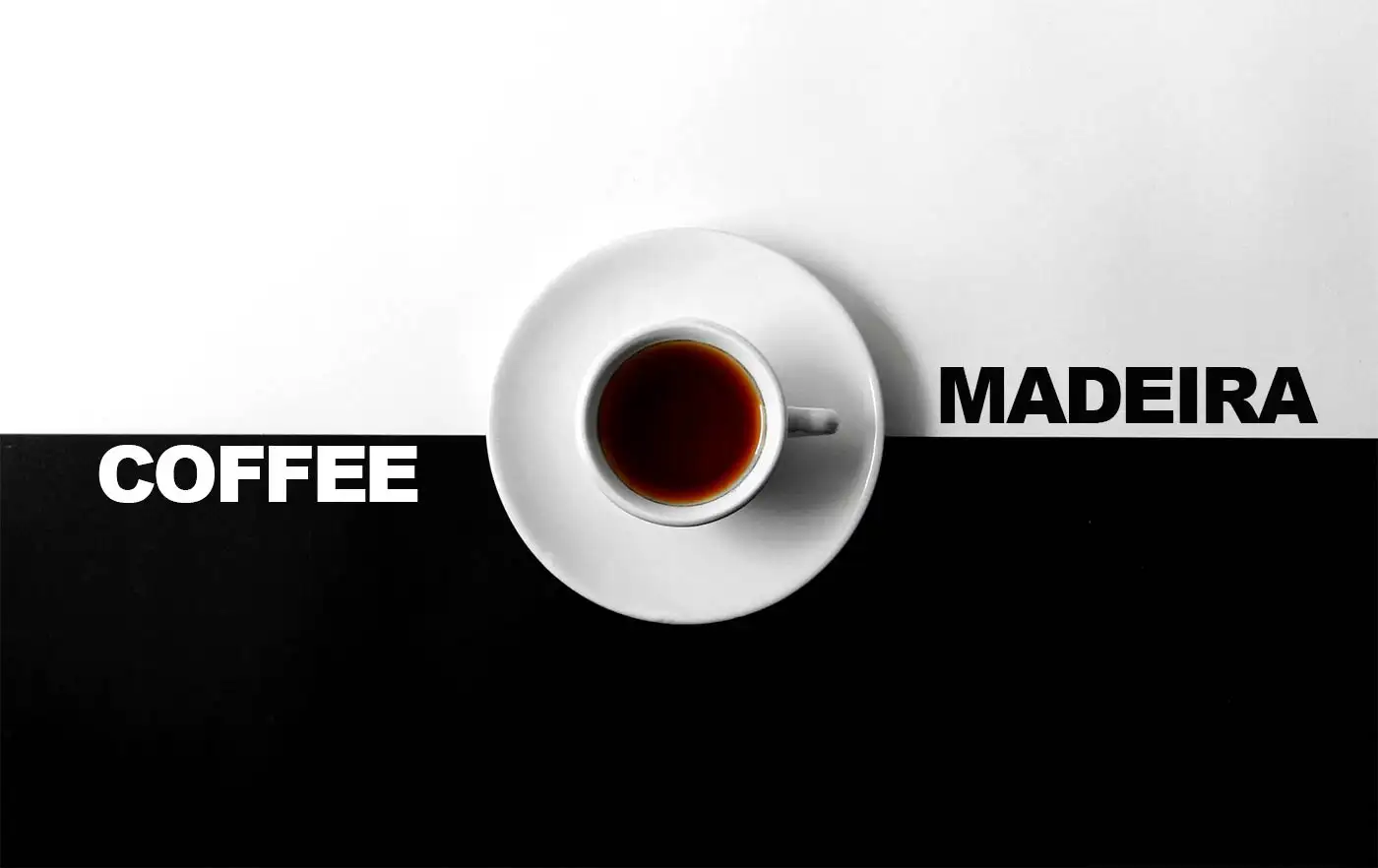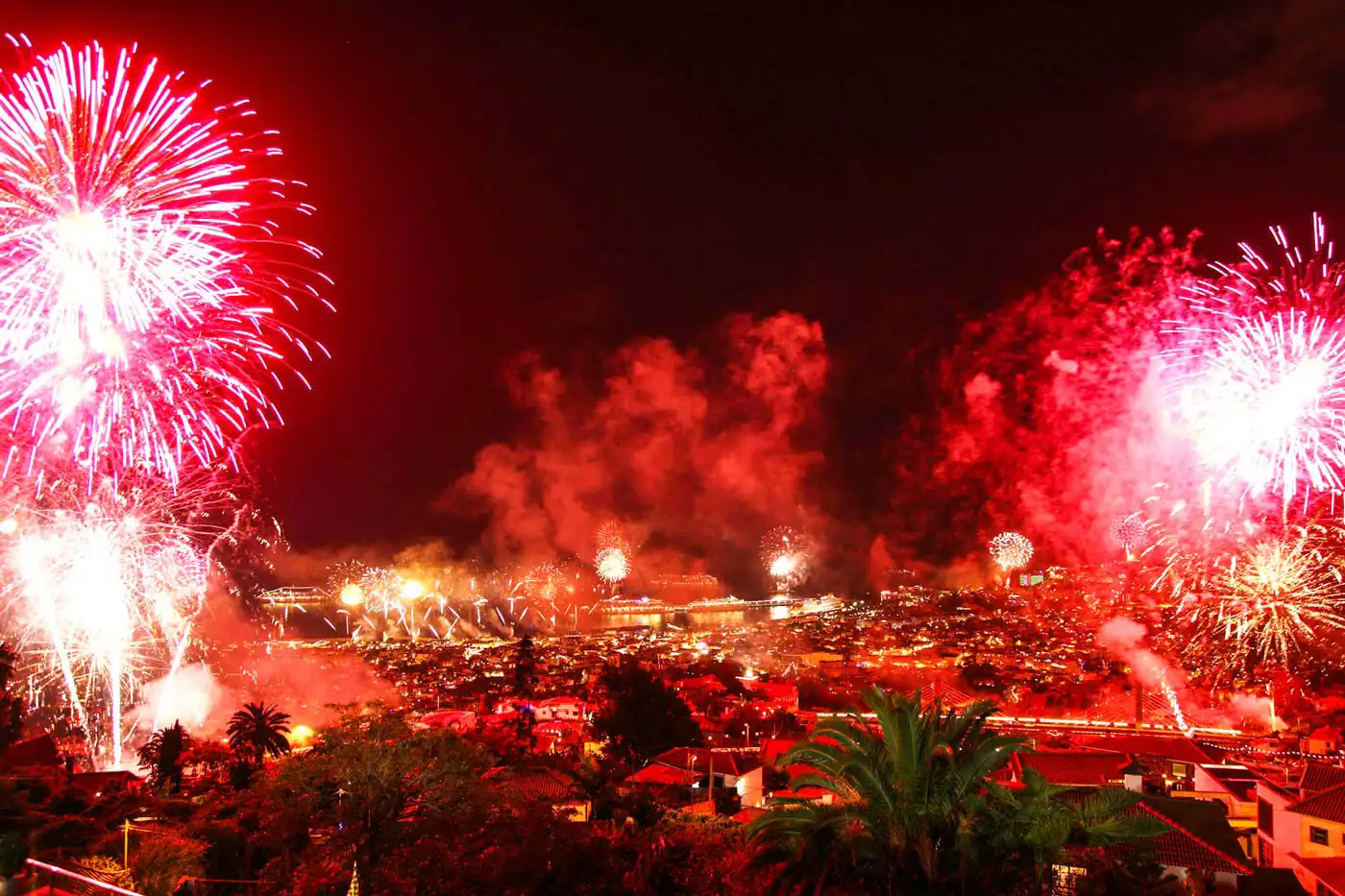Having a fresh coffee in Madeira is a daily ritual that connects locals and visitors alike. For tourists and foreign nationals navigating the island, the options for choosing a coffee can be overwhelming. However, with a little guidance, ordering coffee in Madeira can become an enjoyable experience.
- Coffee in Madeira: A Cultural Staple
- Bica Coffee: The Heart of Madeira’s Coffee Culture
- Bica Cheia: Madeira’s “Full Cup” Espresso
- Carioca: A Milder Sip of Madeira
- Chino Coffee: Madeira’s Milder Long Coffee
- Garoto Coffee: Madeira’s Little Espresso with Milk
- Pingo Coffee: Espresso with a Touch of Milk
- Galão: The Milder, Milk-Heavy Coffee
- Chinesa: Half Coffee, Half Milk
- Madeira Coffees Ranked from Strongest to Weakest
- Yet, There’s More Coffee…
- Quick Guide to Ordering Coffee in Madeira
Coffee in Madeira: A Cultural Staple
Coffee is part of Madeira’s culture, where local cafés and trendy specialty coffee shops exist in abundance. But when it comes to coffee, there are many sorts, and they have different names! There is no such thing as a cappuccino, latte or flat white and you will need to know what is bica. So unless you are familiar with the Madeira expressions, ordering the right coffee is something you will need to address. Let’s take a closer look at what coffee there is!
Bica Coffee: The Heart of Madeira’s Coffee Culture
What is Bica?
In Madeira, bica is the most common way to order a small, strong coffee. It is similar to an espresso, served in a small cup, and is a big part of daily life. Many people drink it quickly while standing at the counter, or sit down and enjoy it during a short break. The flavor is rich and strong, and most people drink it black or with a little sugar.
Where Does the Word "Bica" Come From?
The word bica started in Lisbon, the capital of Portugal, in the early 1900s. Some say it stands for Beba Isto Com Açúcar (Drink This With Sugar), because the coffee was strong and needed sweetening. Another idea is that it comes from the Portuguese word “bica”, meaning spout, the part of the coffee machine where the coffee pours out.
Today, the word bica is used all over Portugal, including Madeira, to mean a small espresso-style coffee.
The name bica originates from the way the coffee flows, falling from the espresso machine to the cup on the tray, an analogy with a water spring or fountain; both can also be called bica in Portuguese.
Bica, Wikipedia
What Makes a Bica Special?
Strong Taste: Bica has a bold flavor. It’s made from dark roasted coffee beans, often a mix of Arabica and Robusta, which gives it strength and a rich aroma.
Crema on Top: A good bica has a layer of light brown crema on top. This shows the coffee was made correctly and adds to the texture.
Serving Size: A bica is served in a small espresso cup. The Volume is around 25 to 35 milliliters of coffee. It is served hot.
Quick and Social: Many locals drink bica in just a few sips, often while standing and chatting at the café bar.
Bica Cheia: Madeira’s “Full Cup” Espresso
What is Bica Cheia?
Bica cheia means “full bica” in Portuguese. It’s a popular way to enjoy coffee in Madeira if you want something a bit longer and less intense than a standard bica. Although it uses the same amount of ground coffee, more hot water is allowed to pass through during the brewing process, resulting in a milder flavor and a fuller cup. While a regular bica is about 25 to 35 milliliters, a bica cheia usually contains 50 to 60 milliliters of coffee. The taste is still rich and strong, but a little smoother and easier to drink for those who prefer something less sharp.
This drink is ideal for people who enjoy espresso but want a few more sips or a less intense experience. It’s a great choice if you're planning to sit and relax at a café, or if you’re new to strong Portuguese coffee and want to ease into it.
Carioca: A Milder Sip of Madeira
What is Café Carioca?
If you enjoy the flavor of espresso but want something lighter and less intense, carioca is a perfect choice. Popular in Madeira, this drink offers a softer version of a bica. It still has the taste of coffee but with a smoother and gentler profile, making it easier to drink multiple times a day. Carioca usually has around 40 to 60 milliliters of liquid, depending on how it’s made, and is often served in the same small cup as a bica. It’s a good option if you enjoy sipping coffee without feeling the strong hit of caffeine.
Where Does the Name “Carioca” Come From?
The word “carioca” is best known as the name for people from Rio de Janeiro, Brazil. However, in Madeira, the coffee has no direct connection to Brazil. The exact reason for the name is unknown, but it may reflect the idea of a more relaxed and laid-back coffee experience, similar to the lifestyle often associated with Rio.
How is It Made?
There are two common ways to prepare carioca:
The first method uses the same coffee grounds as a regular bica, but with more hot water, resulting in a weaker and lighter drink.
The second method uses reused coffee grounds (second extraction) - for example, from a bica that was just made. The second extraction produces a much milder flavor.
Both versions are lower in caffeine and softer in taste than a bica, but still offer the familiar espresso aroma. Locals often drink carioca later in the day, or even multiple times a day, because it’s easier on the stomach and lighter on the nerves.
Be Careful When Ordering
In Madeira, if you ask for just “um carioca,” you might get something completely different. A carioca de limão is a hot drink made with lemon peel and water—no coffee involved.
Chino Coffee: Madeira’s Milder Long Coffee
What is Chino Coffee?
If you're looking for a long, light coffee in Madeira, ask for a chino. This drink is similar to an Americano, made by adding hot water to a shot of espresso. The result is a coffee that is less intense than a bica, but still keeps that bold espresso flavor, just smoother and easier to sip.
A chino is usually served in a larger cup than a bica, with a total volume of about 100 to 150 milliliters, depending on how much water the barista adds. Each café may prepare it a little differently, but the idea is the same: a long, mild, and balanced coffee that’s perfect for those who find a regular espresso too strong.
Where Does the Name Come From?
The word “chino” in Portuguese literally means “Chinese man”, but its coffee connection is unclear. There’s no known link between the drink and Chinese culture or cuisine. The origin of the name in Madeira remains a bit of a mystery - possibly local slang or a playful term that stuck over time.
What’s clear is that a chino is not a cappuccino or a latte - there’s no milk involved. It’s simply an espresso extended with more water, served hot, smooth, and often slowly enjoyed throughout the morning or afternoon.
Garoto Coffee: Madeira’s Little Espresso with Milk
What is a Garoto?
A garoto is a small and creamy espresso with a touch of milk - Madeira’s version of a mini macchiato. The word “garoto” means “boy” or “little one” in Portuguese, and the name fits perfectly: it’s a small, milder coffee, perfect for those who want the strength of espresso but softened by a dash of milk.
It’s typically served in a small espresso cup, just like a bica, but with a spoonful of steamed milk or milk foam added on top. The overall volume is usually around 30 to 40 milliliters, making it smaller than a galão or a meia de leite, but smoother than a plain espresso.
Why Is It Called Garoto?
The exact origin of the name “garoto” is unclear, but it likely refers to the coffee’s size and softer taste. Just like a “little boy” might be seen as gentle and less intense than an adult, this drink offers a gentler version of espresso. It’s a common order across Portugal, not just Madeira, especially for those who want a short coffee with a creamy touch.
How Is It Made?
A garoto starts with a regular shot of espresso (bica), to which the barista adds a small amount of hot milk or milk foam—just enough to mellow the taste, not enough to overpower the coffee. Some cafés use foamed milk, while others might add liquid steamed milk; it depends on the style of the café.
Despite the milk, the coffee flavor still dominates, making it a favorite for people who don’t want a full milk-based drink like a meia de leite, but still want something smoother than a plain espresso.
When to Order a Garoto?
Garoto is often ordered in the morning or after a meal, especially by those who prefer a softer finish to their coffee experience. It’s not as heavy as a latte, but more approachable than a straight bica - an excellent in-between option.
Pingo Coffee: Espresso with a Touch of Milk
What is a Pingo?
Pingo, also called pingado (Portugal mainland), is a simple yet popular coffee drink in Madeira and Portugal. It is basically a small espresso with just a few drops of milk added. The milk softens the strong espresso flavor just enough to create a slightly creamier taste without losing the coffee’s boldness.
Typically, a pingo contains about 25 to 30 milliliters of espresso with a tiny amount (a teaspoon or less) of hot milk. It’s served in a small cup, like a bica, and is a quick, strong coffee option for those who want just a hint of milk.
Why Order a Pingo?
If you find a straight espresso a bit too sharp but don’t want a milk-heavy coffee, a pingo is the perfect middle ground. It’s often ordered in the morning or during a quick coffee break.
Galão: The Milder, Milk-Heavy Coffee
What is a Galão?
A galão is a popular Portuguese coffee that’s mostly hot milk with a small amount of espresso. It’s similar to a latte and served in a tall glass, usually with one part espresso to three parts milk. The total volume of a galão is typically around 200 to 250 milliliters, making it a larger and much creamier coffee drink.
When to Drink a Galão?
Galão is usually enjoyed at breakfast or as an afternoon treat. Its gentle, milky taste makes it very approachable for people who prefer less intense coffee.
Chinesa: Half Coffee, Half Milk
What is a Chinesa?
The Chinesa literally means “chinese women” and corresponds to the “meia de leite“ on the mainland. It is a classic Portuguese coffee choice. It’s made with equal parts espresso and hot milk, often served in a large cup or glass.
With about 100 to 150 milliliters in total, Chinesa offers a creamy texture and a balanced coffee flavor, stronger than a galão but milder than a bica. It’s very popular for breakfast or a mid-morning coffee break.
Why Choose a Chinesa?
This coffee is perfect if you want a good balance of coffee and milk, not too strong, not too light. It’s comforting and creamy without being overpowering.
Madeira Coffees Ranked from Strongest to Weakest
Type | Strength | Milk | Size | Flavor |
|---|---|---|---|---|
Bica | 🔥🔥🔥🔥 | None | 25–35 ml | Strong, classic espresso |
Pingo | 🔥🔥🔥 | A drop of hot milk | 25–30 ml | Bold with slight creaminess |
Garoto | 🔥🔥🔥 | Spoon of steamed milk | 30–40 ml | Creamy but still strong |
Bica Cheia | 🔥🔥🔥 | None | 50–60 ml | Milder than bica, fuller cup |
Carioca | 🔥🔥 | None | 40–60 ml | Mild espresso, softer taste |
Chino | 🔥🔥 | None | 100–150 ml | Smooth, diluted espresso (like Americano) |
Chinesa | 🔥🔥 | 50% hot milk | 100–150 ml | Balanced, creamy |
Galão | 🔥 | 75% hot milk | 200–250 ml (glass) | Very milky, softest flavor |
Yet, There’s More Coffee…
Descafeinado (Decaf Coffee)
Coffee made with decaffeinated beans. Can be ordered as bica, galão, meia de leite, etc. Important for international visitors or locals avoiding caffeine. How to order: Add “descafeinado” to the drink name, e.g., “Um galão descafeinado.”
Italiana (Strong short espresso)
A shorter, more concentrated version of a bica, often 15 - 20 ml. Favored by espresso lovers who want an even stronger shot.
Abatanado
What it is: unlike a Chino, it’s usually made by drawing more water directly through the espresso machine (not by adding water after). Some cafés distinguish it from a Chino, and it’s a common order across Portugal but not Madeira in particular
Optional (Less Common or Regional)
Mazagran – Iced coffee with lemon, sometimes found in Portuguese cafés but rare in Madeira.
Café com Gelo – Espresso served with a glass of ice in summer months.
Café Turco – Turkish-style coffee; not typical in Madeira, but seen in some international cafés.
Quick Guide to Ordering Coffee in Madeira
Strong & Short: "Uma bica"
Slightly creamy: "Um pingo" or "Um garoto"
Lighter espresso: "Um carioca" / "Um carioca de café"
Long black coffee: "Um chino" or "Um abatanado"
Milk-balanced: "Uma chinesa"
Milky & mild: "Um galão"
With sugar: "Com açúcar, por favor"








Comments